A taste of Romania throwback to May 2022 photo tour
A while ago, when we and our small-but-perfectly-formed group of participant photographers were enjoying our last evening on a photo holiday to China, one of our lovely participants Anne asked me: I’d love to go to Romania next, will you take us there?
When we started running photography tours, I never thought we would offer something so ‘close to home’, and for me it doesn’t get closer to home than Romania: the country where I was born and lived for the first 27 years of my life before moving to England.
But when Anne asked the question, I immediately started planning in my head. Due to we-know-what world events that made every bit of international travel an impossibility for a long time, it took a while to actually make this happen, but we finally welcomed another small-but-perfectly-formed group to Bucharest (Anne included!) in May 2022.
Many tours to Romania will tell you to skip Bucharest altogether, but I chose not to. I wanted to give everyone a taste of Romania, and a personal experience, so we had to start in my native town. Bonus of course, it is the capital city and very well connected for international flights, and it suited our idea to run a circular trip from Bucharest (Matt did a splendid job as always at multi-tasking as our minibus driver, not to be sniffed at if you know how some Romanian drivers behave!).
A true testament to its ‘island of Latinity’ amidst Balkan and Slavic influences, Bucharest had always been a melting pot of cultures and you can see that everywhere you go. The architectural landscape had suffered enormously during more than fifty years of totalitarian dictatorship after WW2, which wreaked havoc on Bucharest’s ‘little Paris’ pre-war charm. This in itself made for some interesting photographic challenges for this short stop in the capital.
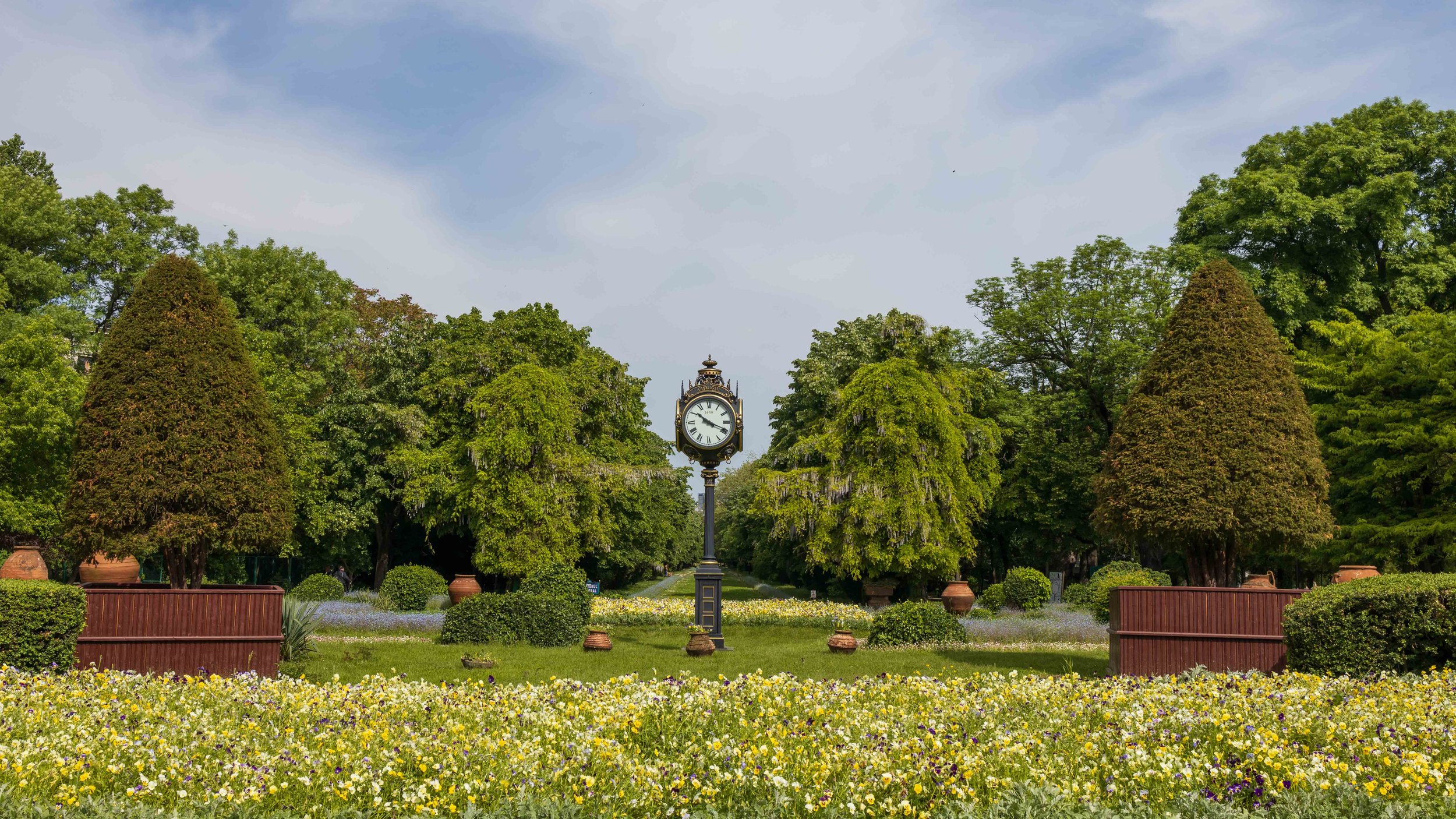
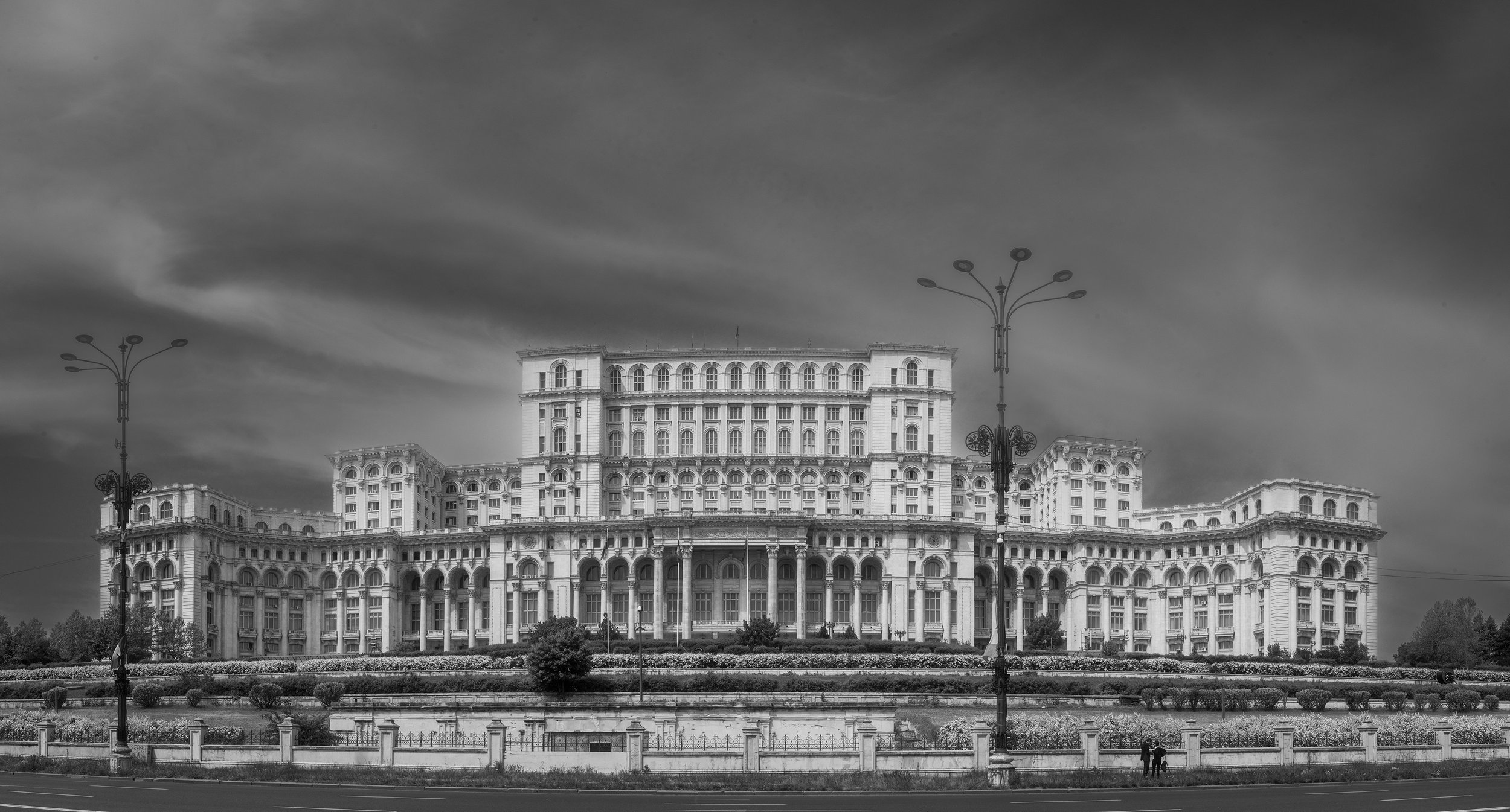
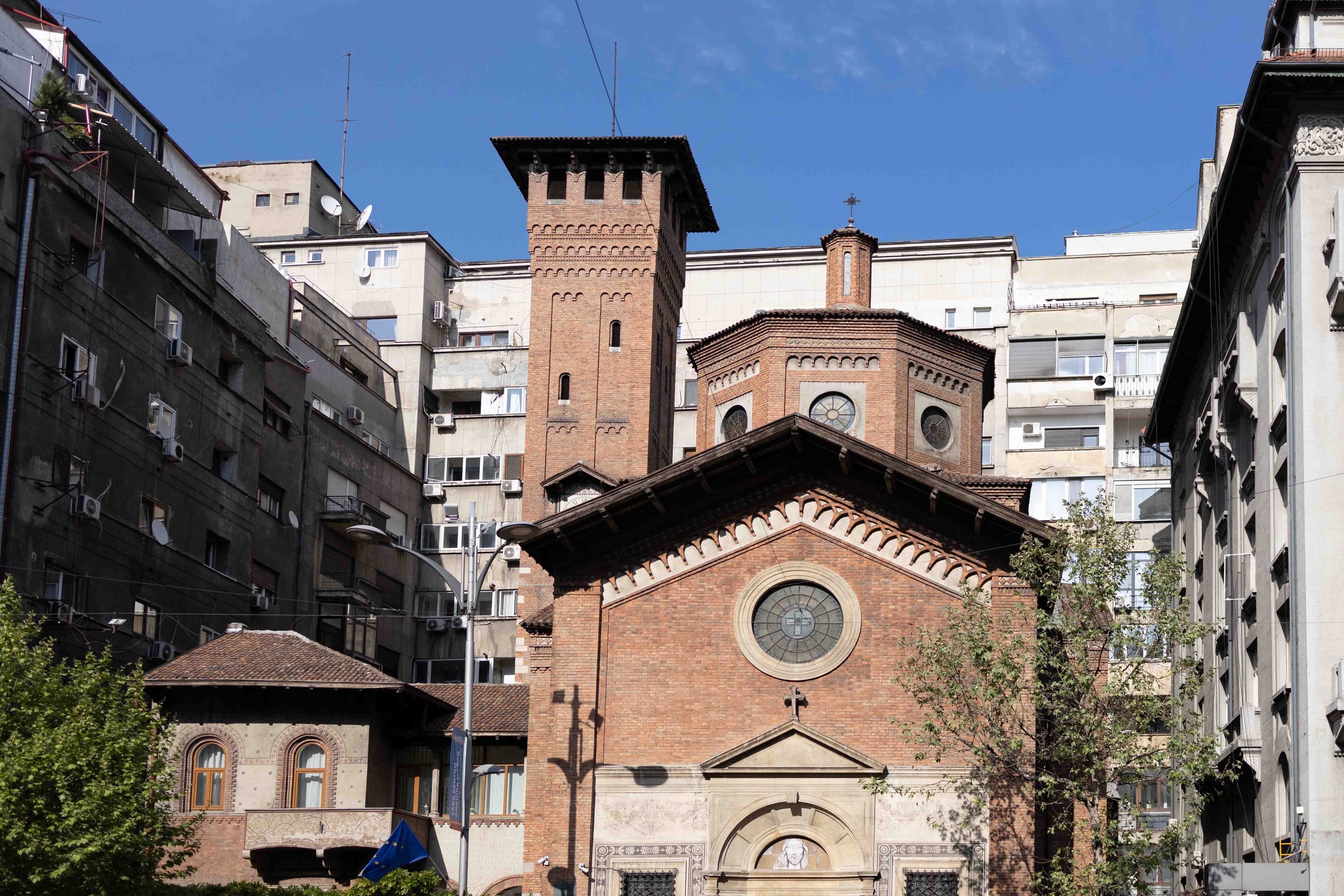
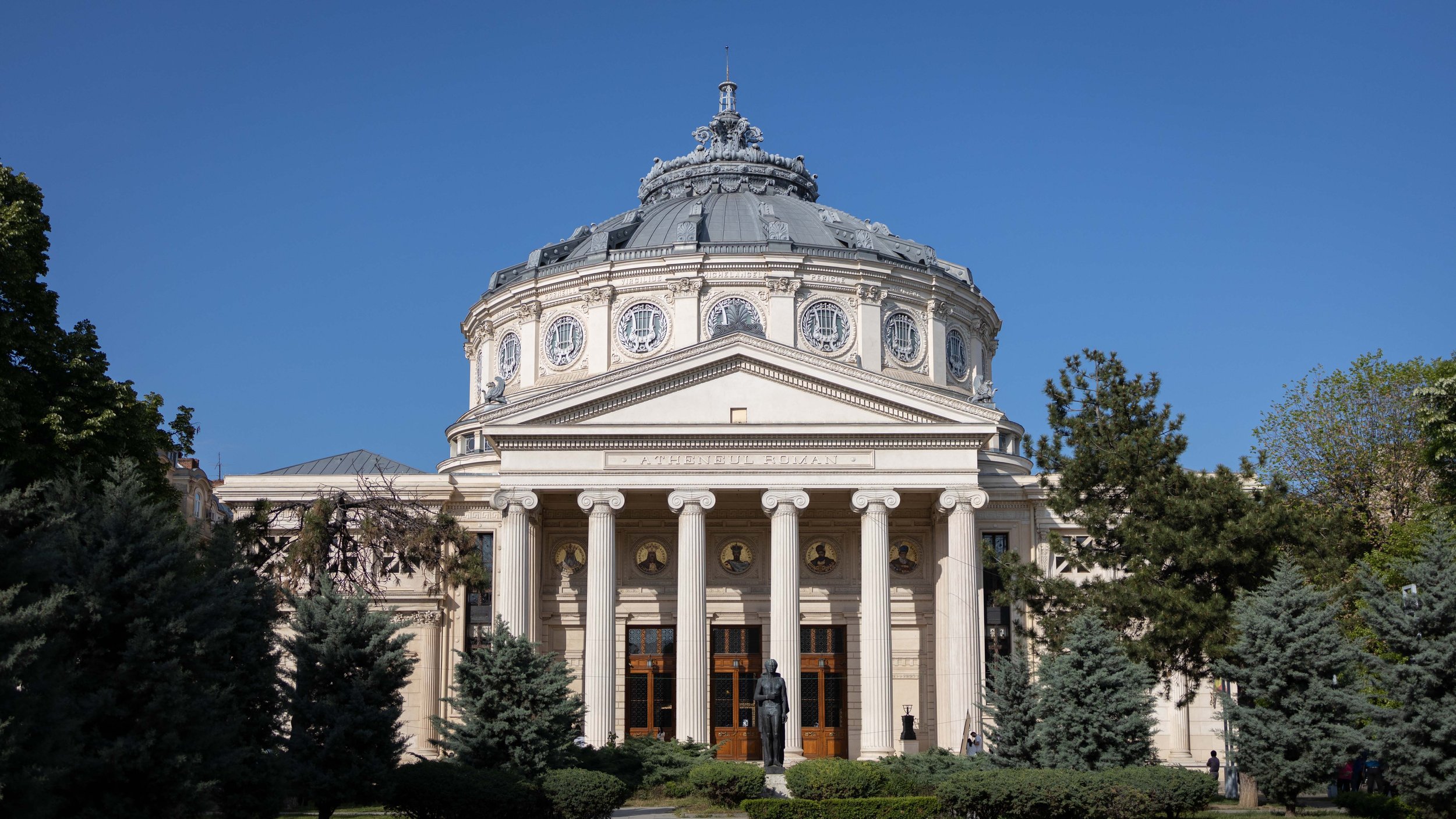
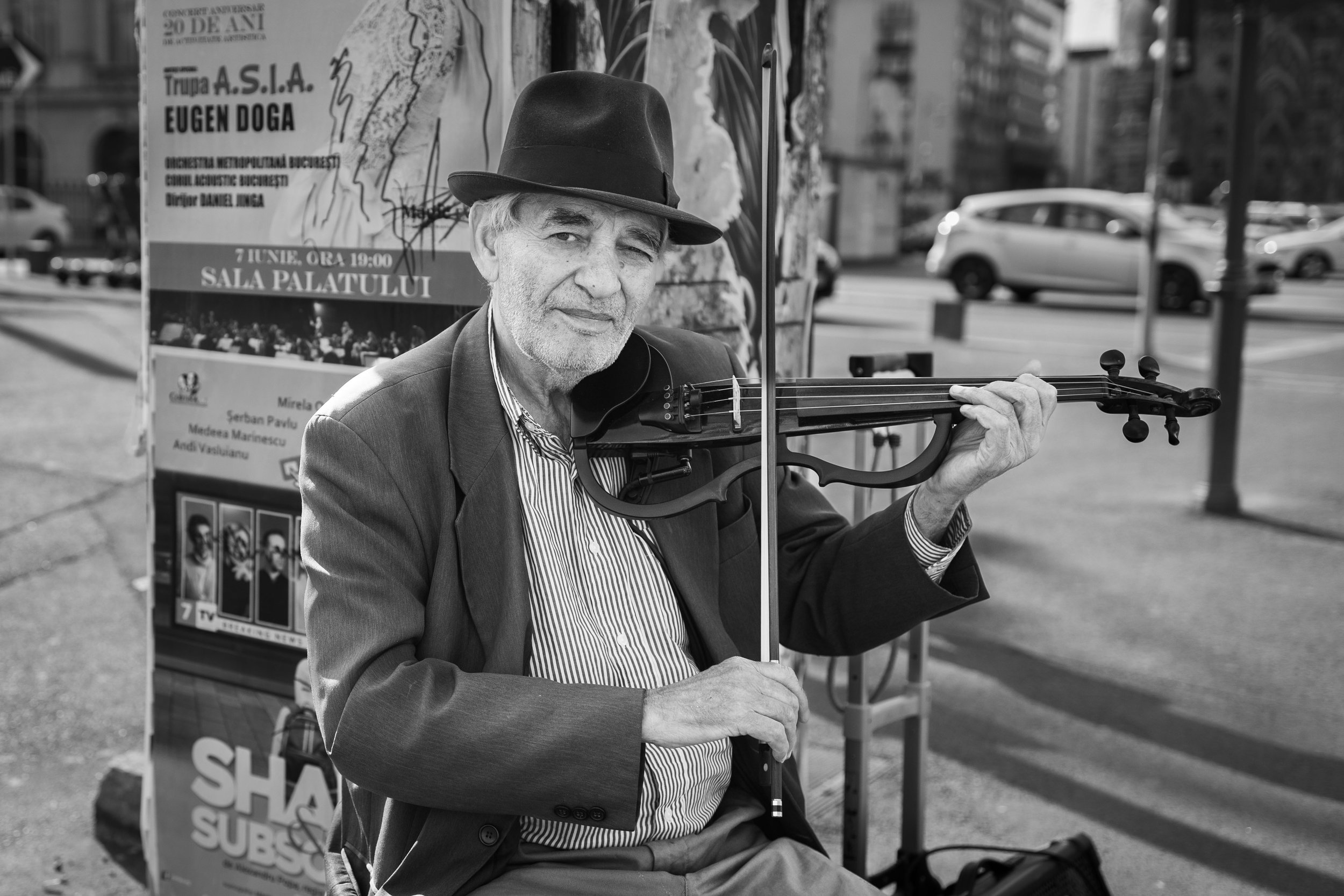
Outside of the photographic opportunities, highlights of the stay were the beautifully restored 1912 Hotel Cismigiu where we stayed, the delicious food we had at Vatra Restaurant and the atmospheric experience of historic Caru cu Bere and Hanu lui Manuc, visiting a great contemporary art exhibition at the Rotenberg-Uzunov gallery and having a couple of refreshment stops on the secluded garden of Green Hours cafe, which also houses a fantastic little basement jazz club, an old haunt of mine in my early Uni days!
After a brief stay in Bucharest, we headed towards the mountains – it is actually surprising for some just how quickly you can get to the mountains from Bucharest, and in our circular trip we decided to head west first, stopping for coffee and views in Paraul Rece following an overnight stop at Complexul Panicel, highlights being their beautiful horses and also the Fagaras mountains in the background.
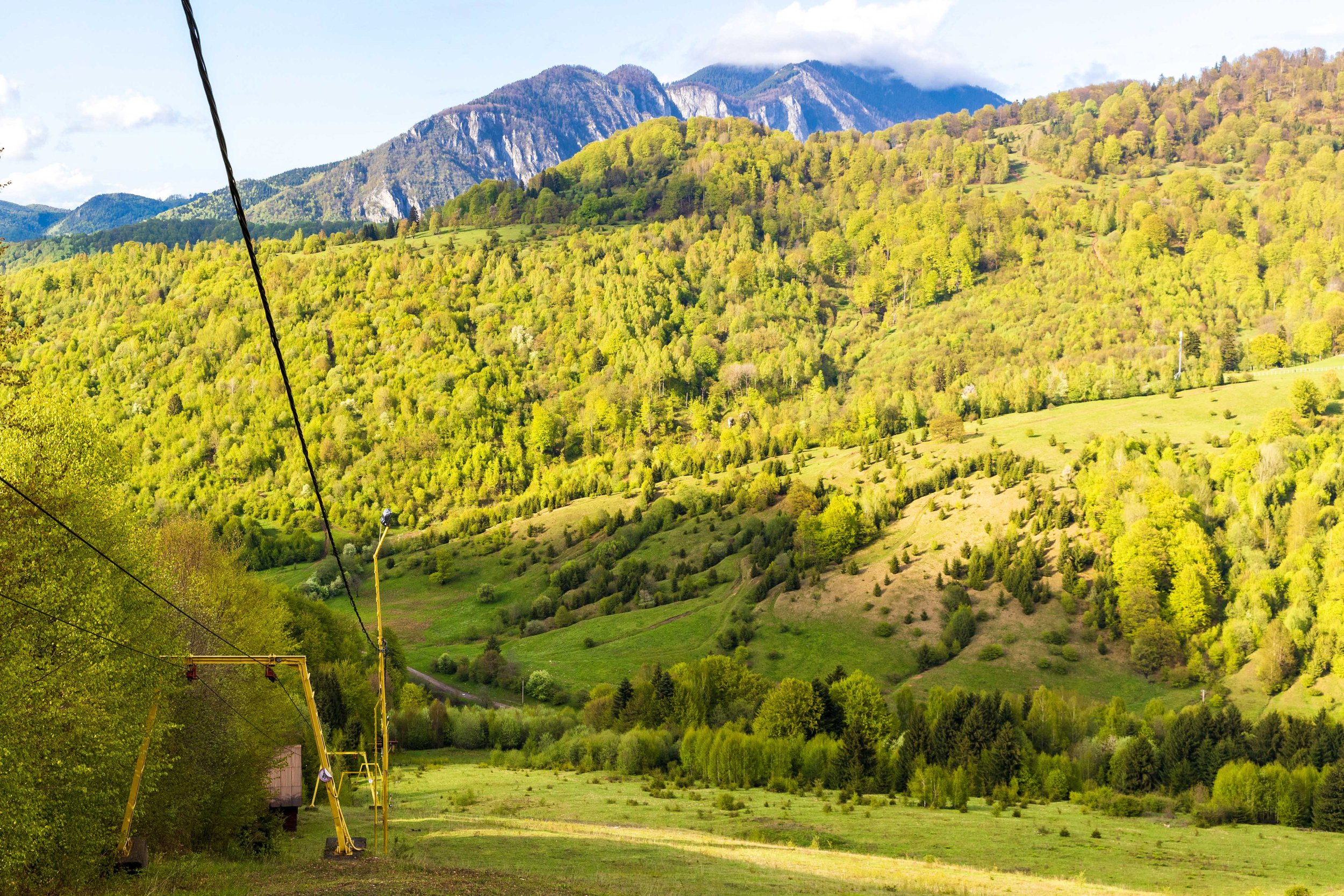

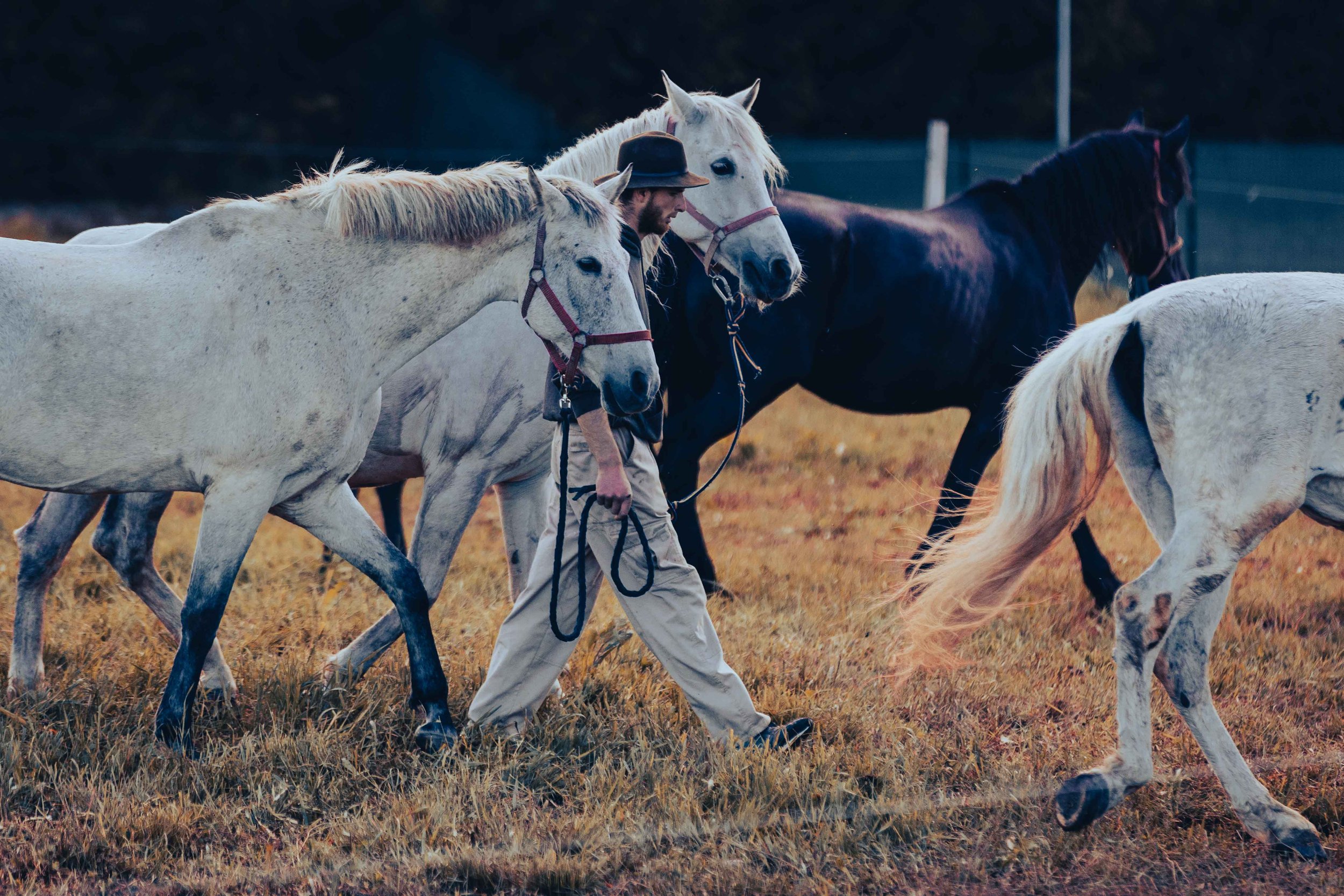
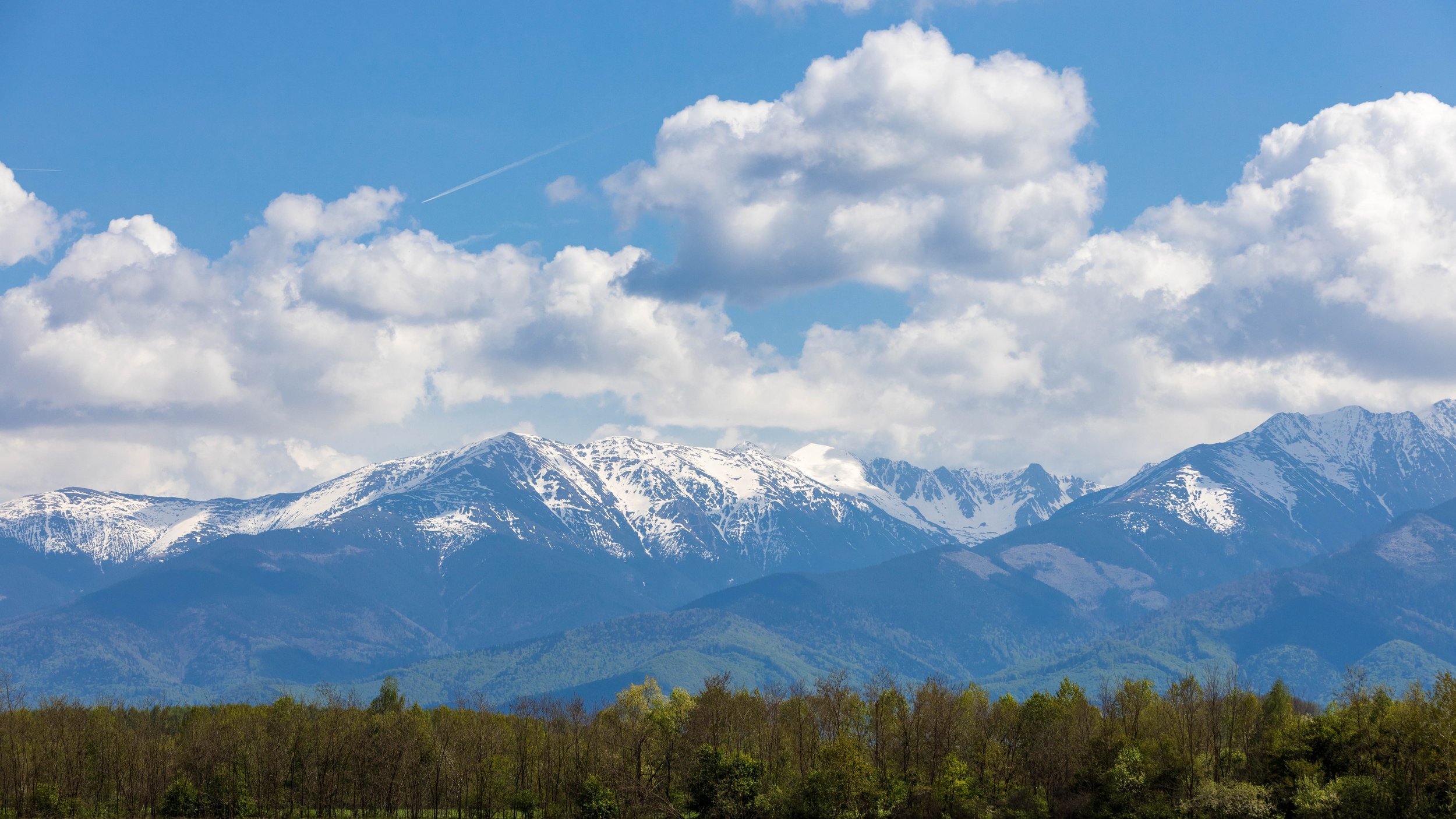
Our next stop was Sibiel, and as we drove along the Fagaras mountains we stopped often along the way to admire the views. Sibiel is a traditional village in the area called ‘Marginimea Sibiului’ – effectively translated as the ‘outskirts of Sibiu’, remote villages rather than suburban areas. This particular village is famous for its secular traditions its old crossroad tryptics and wells, and an impressive carefully curated collection of glass-painted icons, initially established by Father Zosim Oancea, who came to this parish after an incredibly life-threatening experience of being incarcerated for 15 years in a political prison. We were honoured to have an expert guided tour by the in-house curator and conservationist and also experience a live glass icon painting demonstration by a young student.
The highlight of this stay was our specially arranged dinner and folkloric evening with a local family at their house and B&B: all food home-made by our incredible host Mrs Daniela, an incredible woman who became a widow far too young, who manages all this business on her own supported by her two children. And when I say home-made, I really mean everything, from the cheese made with the milk from the family cow, the sourdough bread baked in the traditional stone oven and the home-fermented ‘tuica’. We had musicians and dancers (some being family members) and we could not resist when asked to join in the dancing – including a traditional ‘hora’ (dancing in a circle holding tight onto the dancer on your right and your left especially when it gets going!)

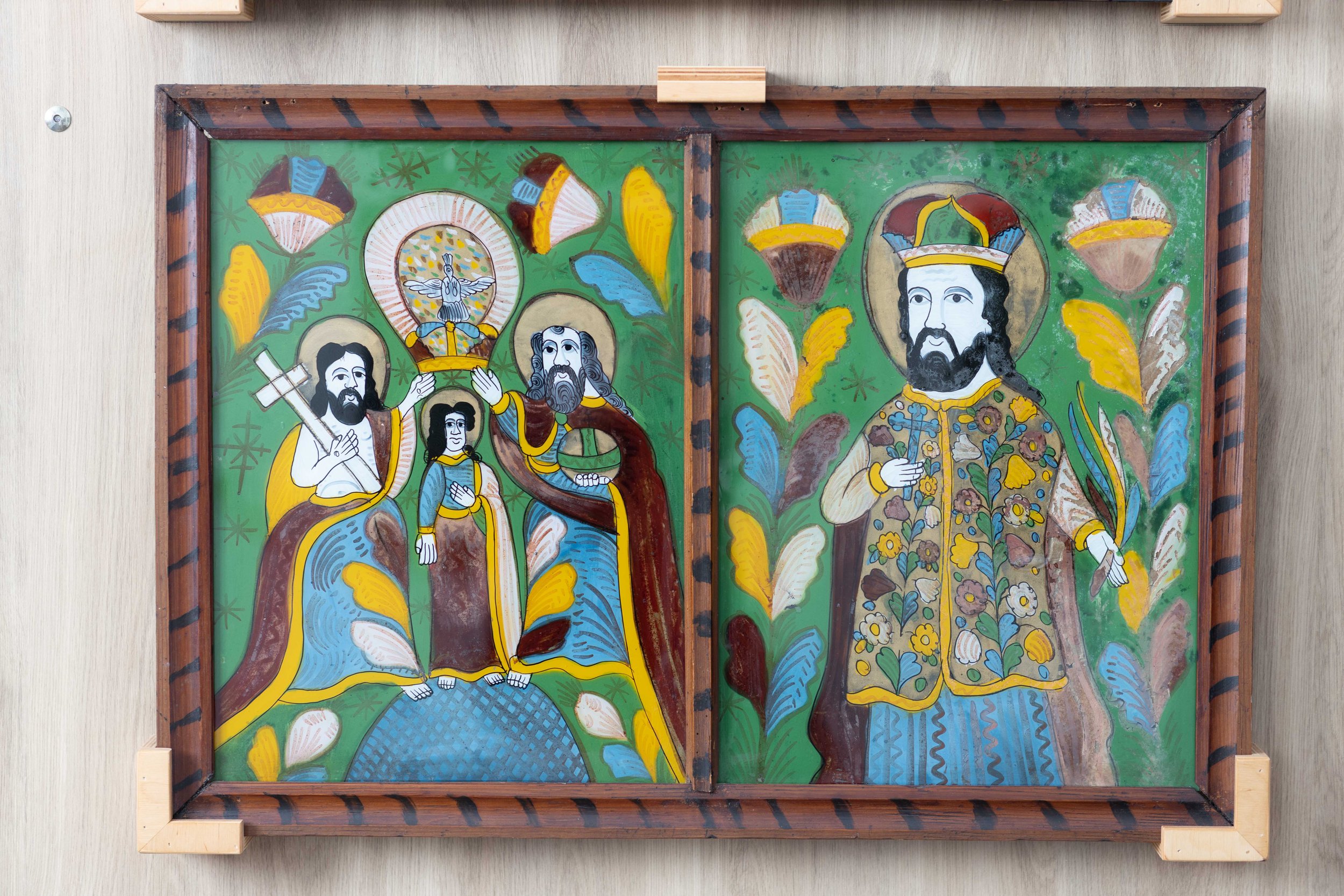
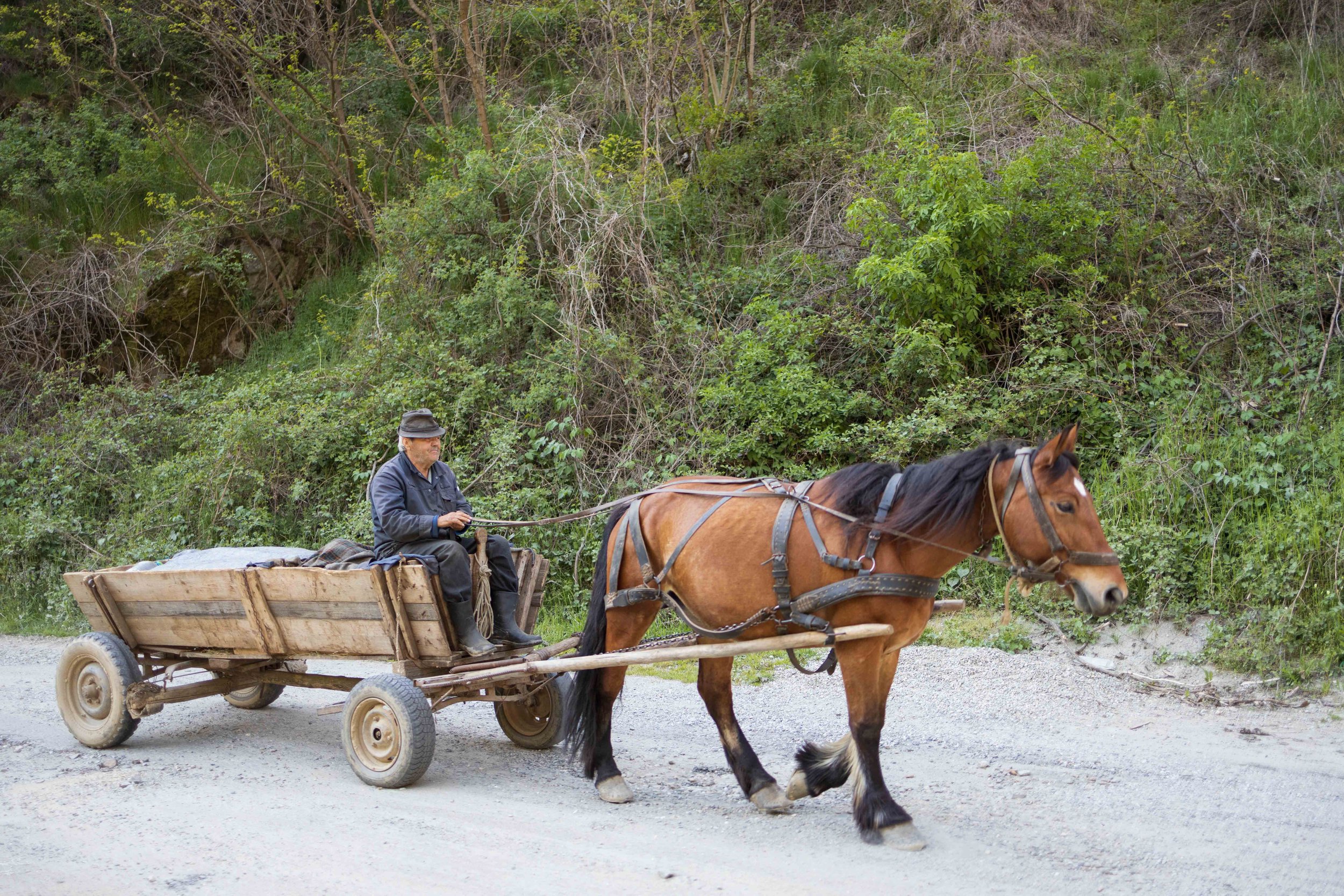


Reluctantly, we left Sibiel on the promise that we will be back next year and hopefully stay a little longer, and we headed towards our next destination, Sighisoara. On the way, we couldn’t not stop in the beautiful town of Sibiu, a historic town whose roots date all the way back to the 12th Century and its Saxon settlements, and former European Cultural Capital (2007). In here, the houses have eyes and if you walk across a certain bridge and tell a lie while on it, it will promptly collapse underneath your feet! After another delicious lunch and a stroll through the historic town centre, and a few images later, we were ready to continue our journey. On the way, we stopped at the village of Brateiu, famous for its master coppersmiths, where the men tirelessly work on making hand-hammered copper bowls and metalware and the women line up the sides of the road awaiting willing visitors like us to make a stop and admire, and hopefully purchase, some of their products. True to my ‘fair trade portraiture’ policy, I got a lovely portrait of the woman who sold me a gorgeous little saucepan which now proudly lives in my kitchen.
Before we knew it, we made it to Sighisoara and checked into our accommodation where we were not only met with amazing hospitality, behind the tall gates that are so typical of courtyard houses in this area, but could easily be a living museum of Romanian ethnography as it is so perfectly decorated. After a welcome home-made ‘palinca’ which made the wifi password difficult to remember (good thing it was written down) we walked into the medieval town, birth place of the (in)famous Vlad the Impaler, via a set of steps nestled at the back of our guest house and privately accessed – we felt special and slightly conspiratory! We saved the photography for after dinner to get some gorgeous dusk light and the cobbled streets and clock tower nicely illuminated for maximum effect.
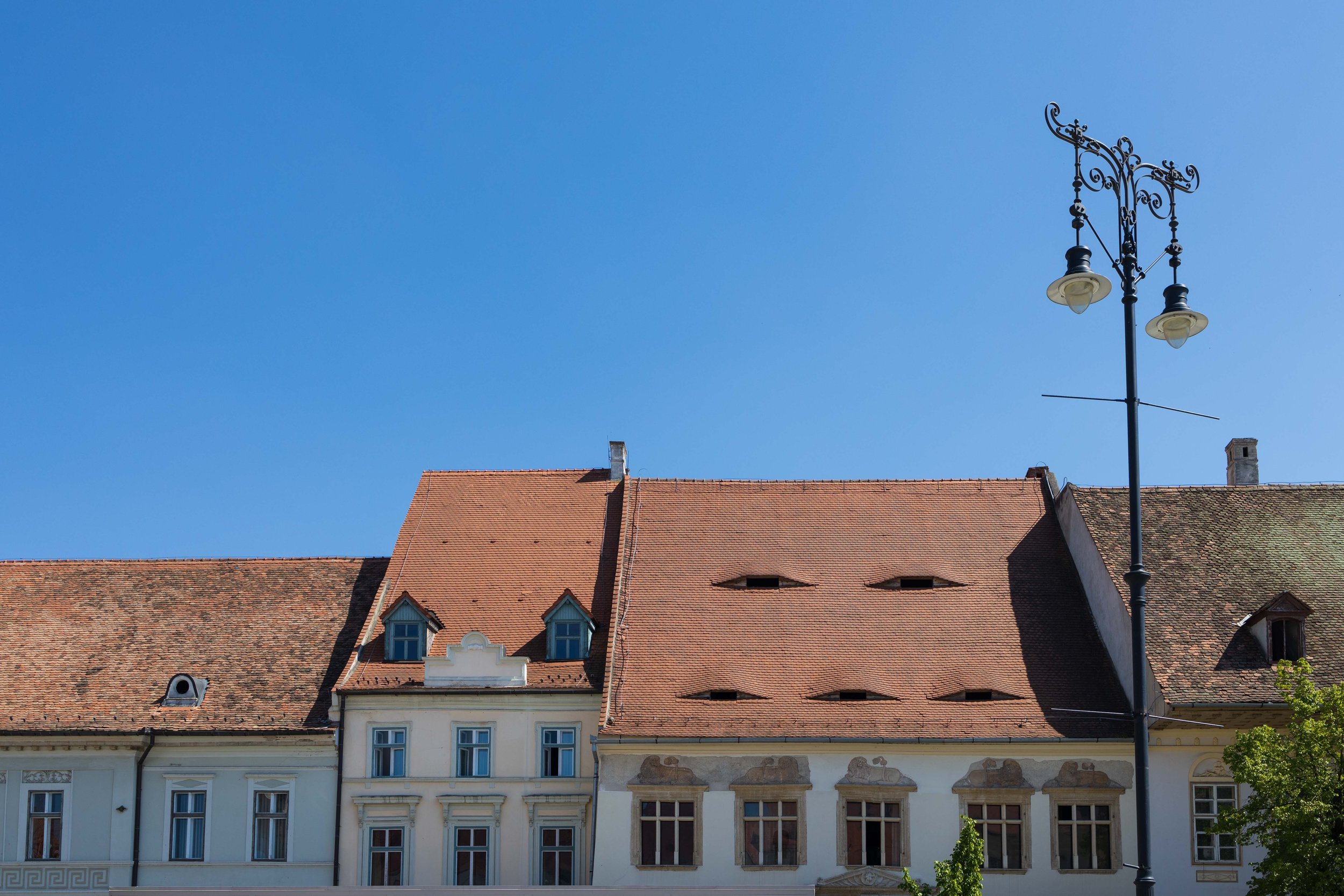
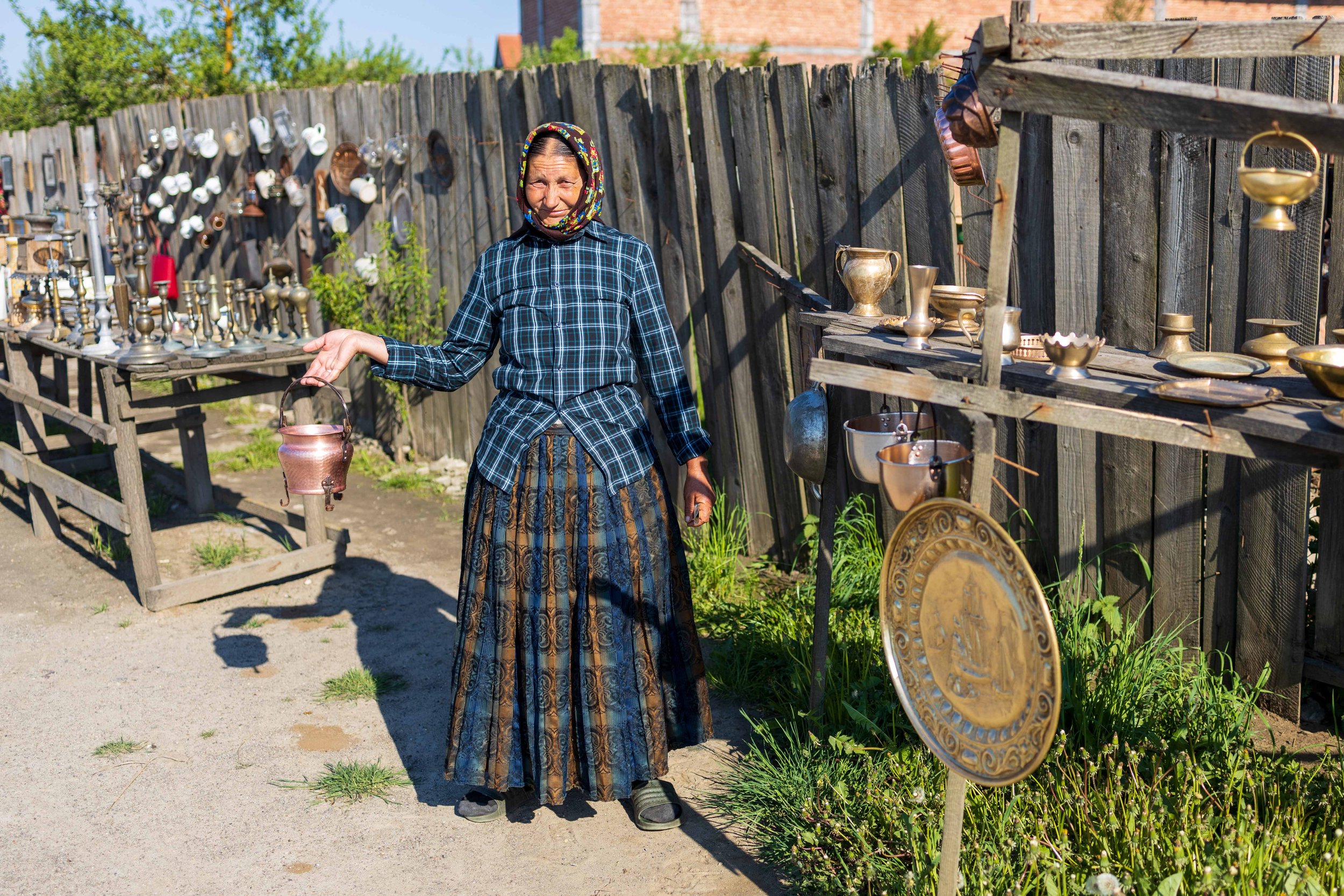
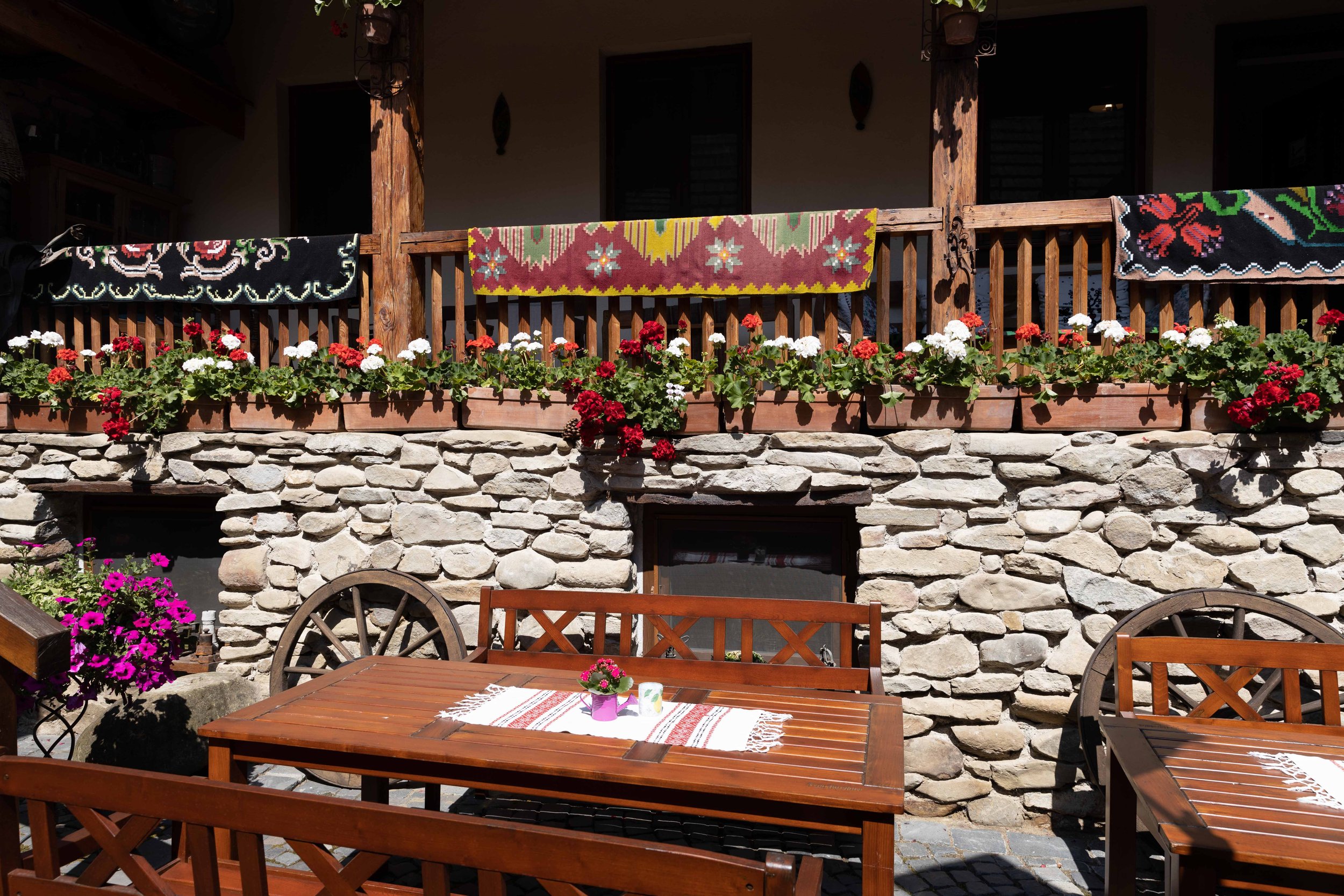
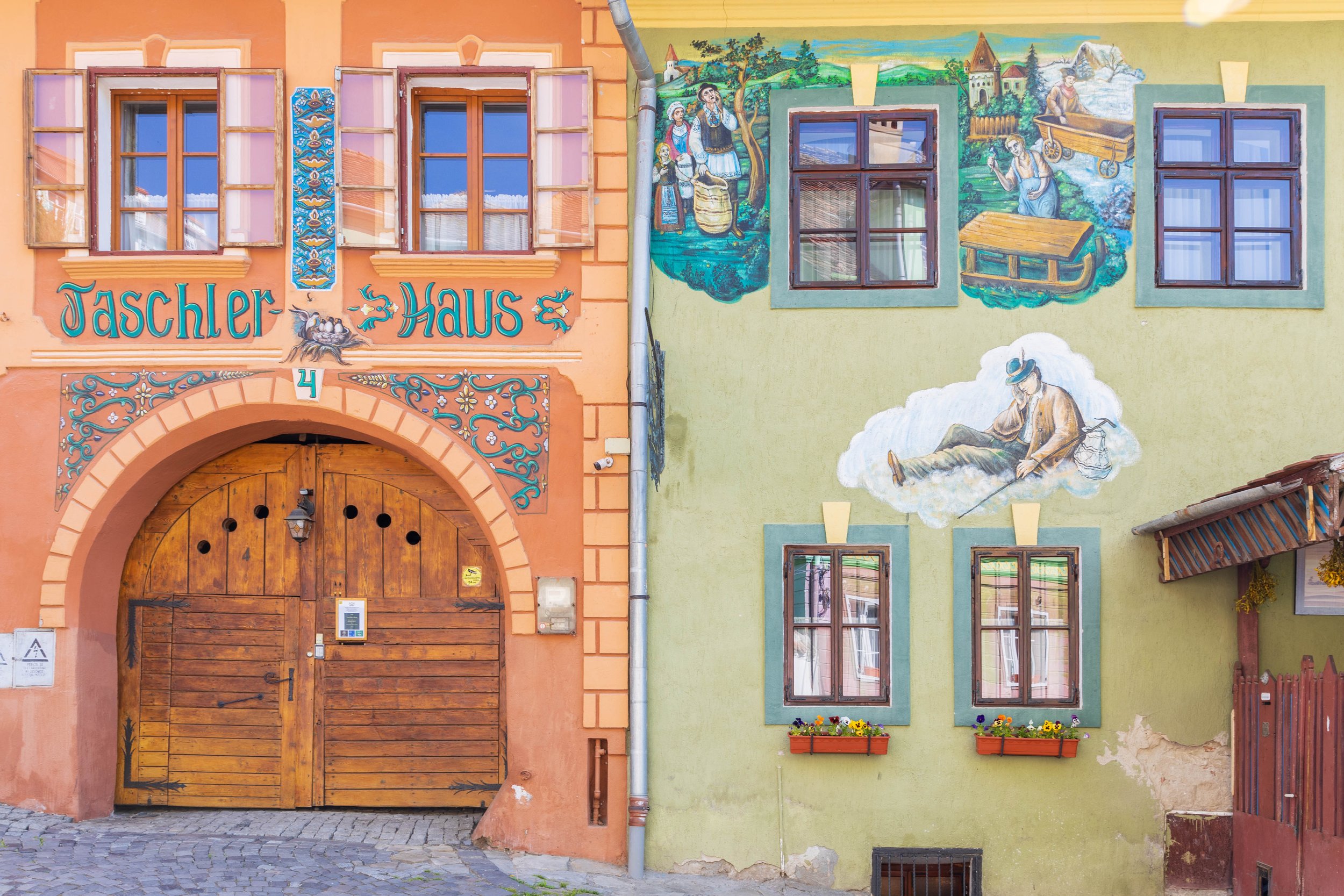
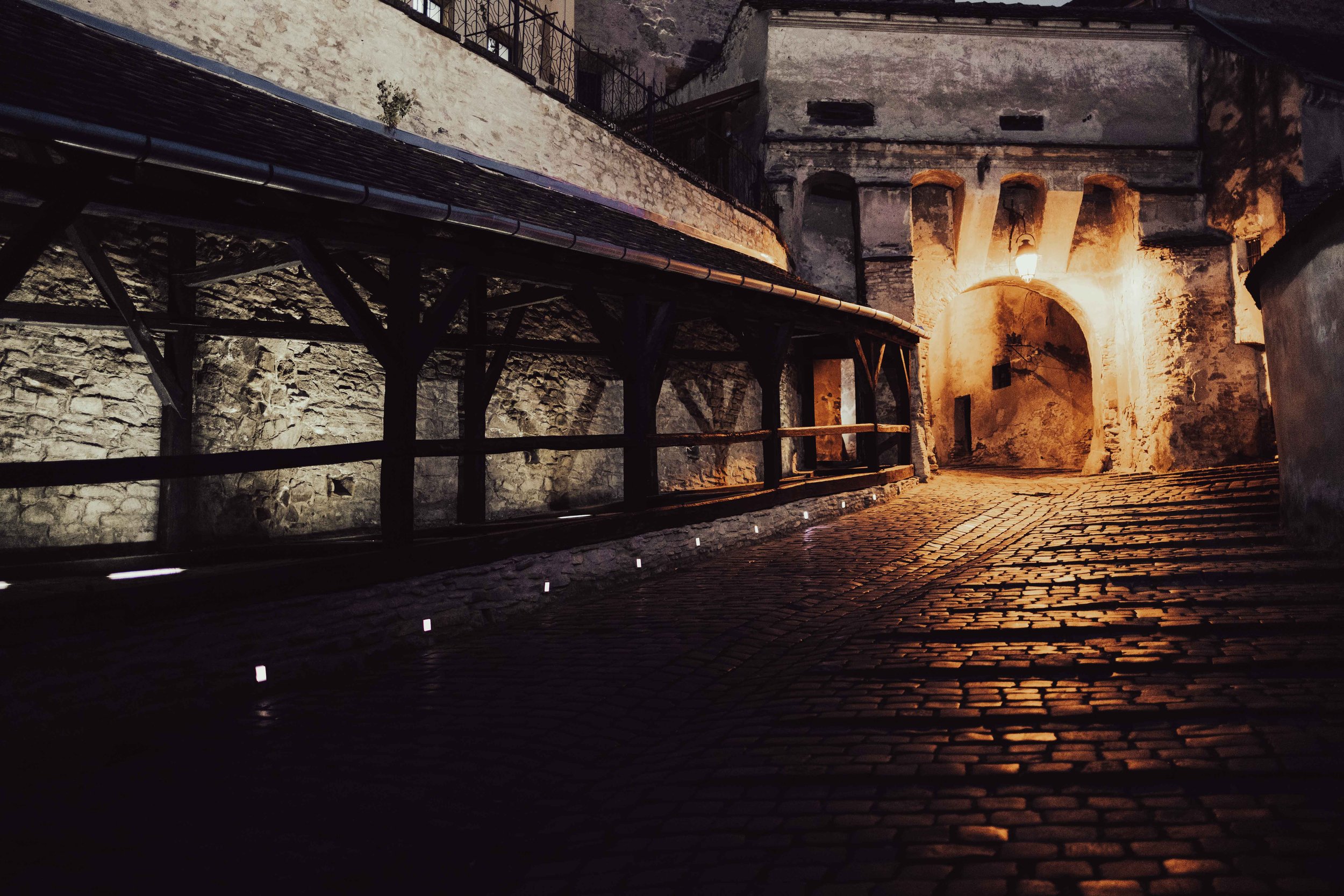
We then proceeded to our next stop famous for its association with the character Dracula, which, based loosely on the actual ruler Vlad the Impaler, has made Romania, Transylvania and in particular the village of Bran and its castle world famous (I guess we can say thank you Bram Stoker!). Our very cleverly placed hotel with balconies overlooking the castle was a godsend especially in the evening when it’d started to rain but we didn’t mind as we, our tripods and cameras were nestled away from the rain and benefiting from a great vantage point to capture the illuminated castle at night.
In the safety of daylight we visited the castle which is also a great place to learn more about Romania’s myths and traditions, ceramics and decorations as well as its Royal past. The much-loved Queen Marie of Romania who was born in Kent as Princess Marie of Edinburgh and married King Ferdinand of Romania, crowned Queen in 1922, was a well-revered personality and fervent and devoted lover and promoter of Romanian traditions and culture throughout her life. Few people know that her heart was actually buried in a little chapel built by her daughter Princess Ileana, which can be found on a hill overlooking the castle.
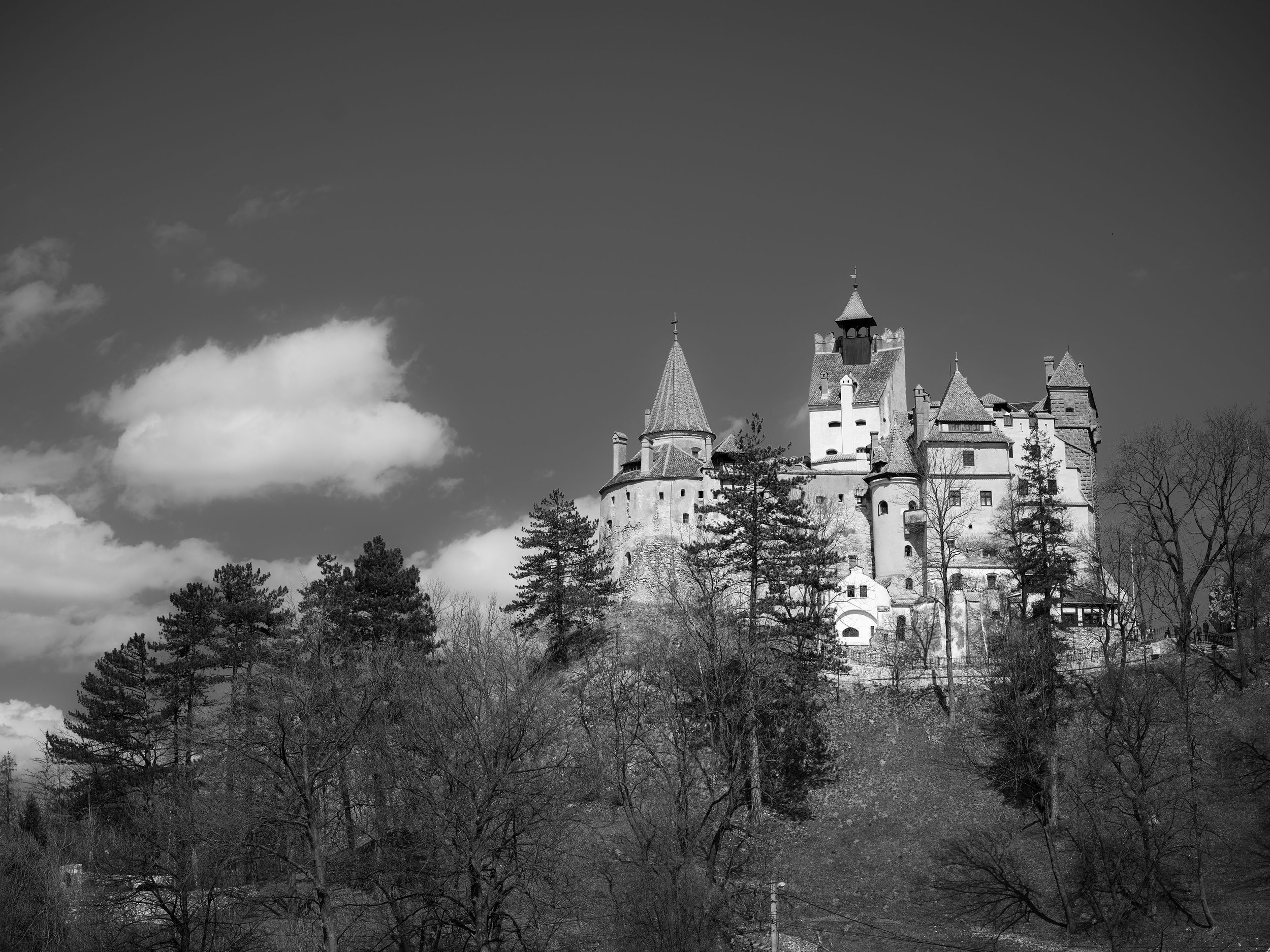
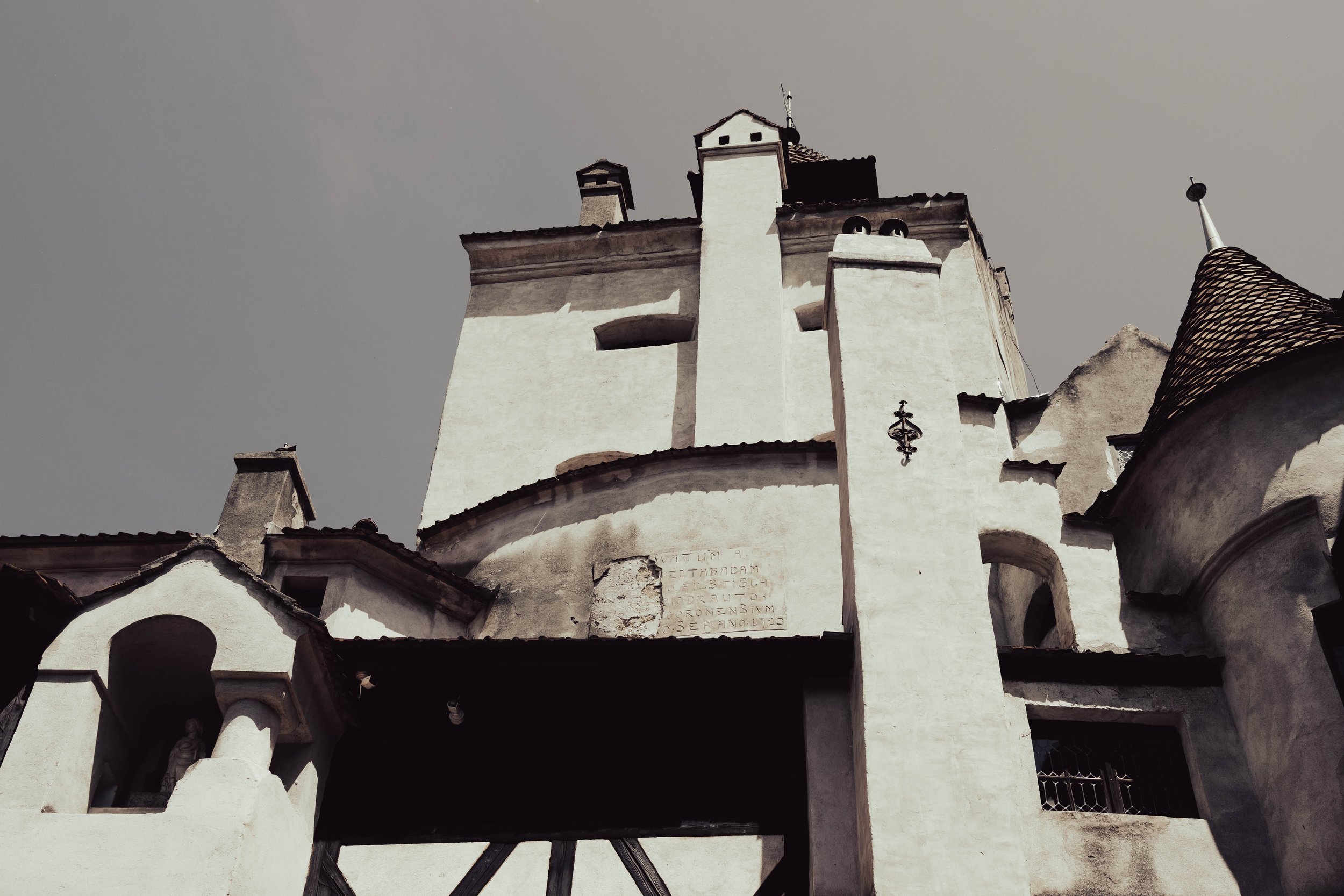

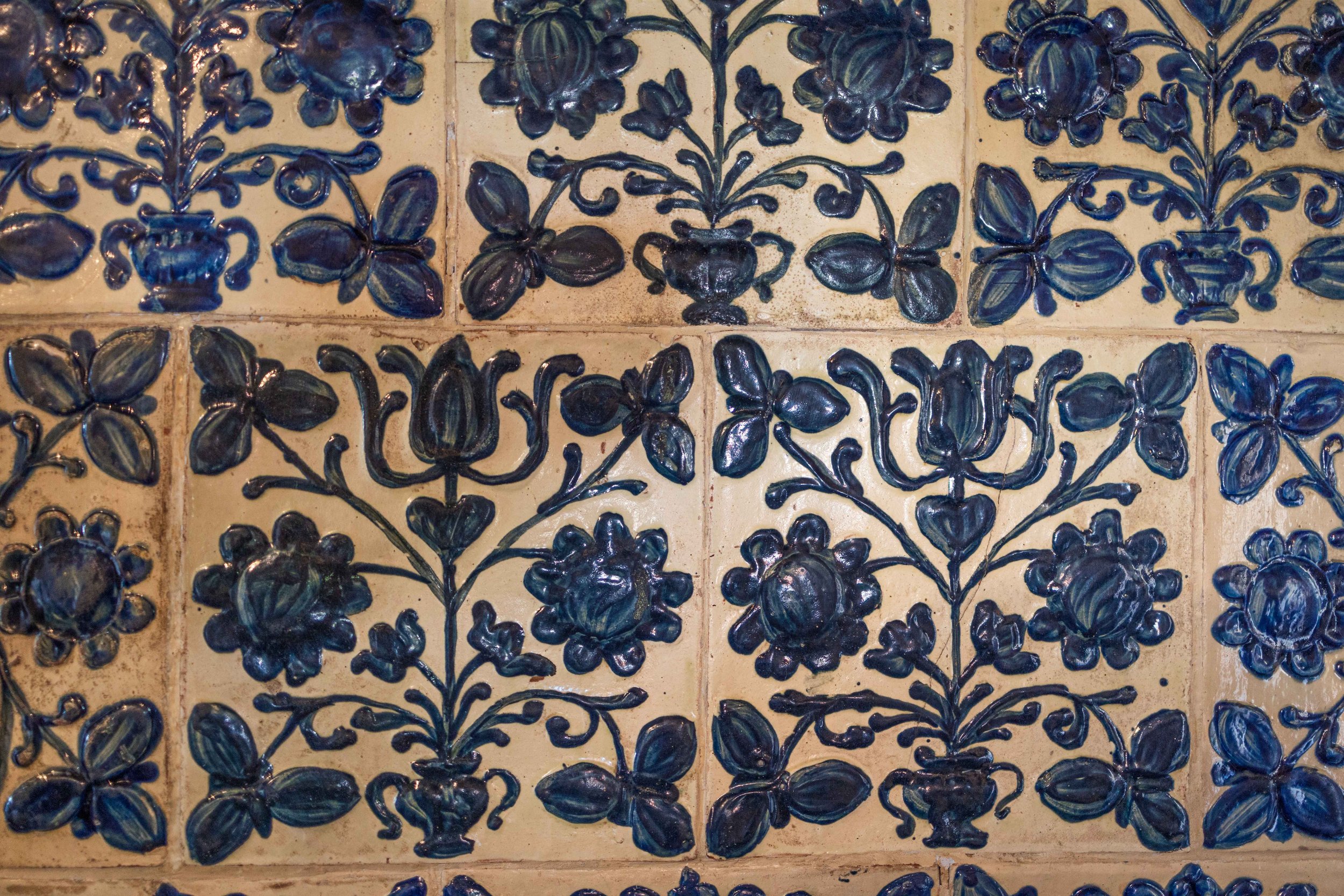
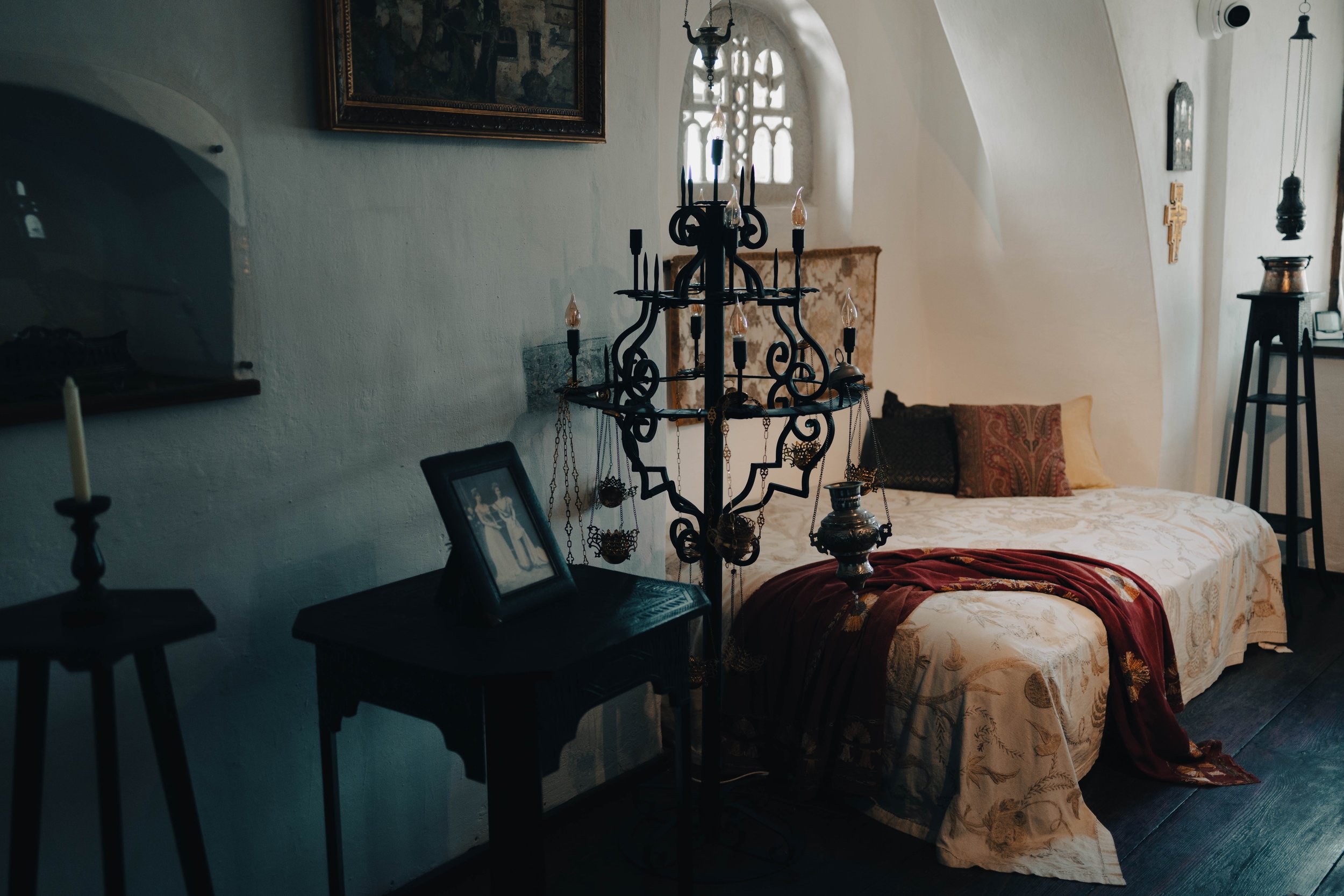
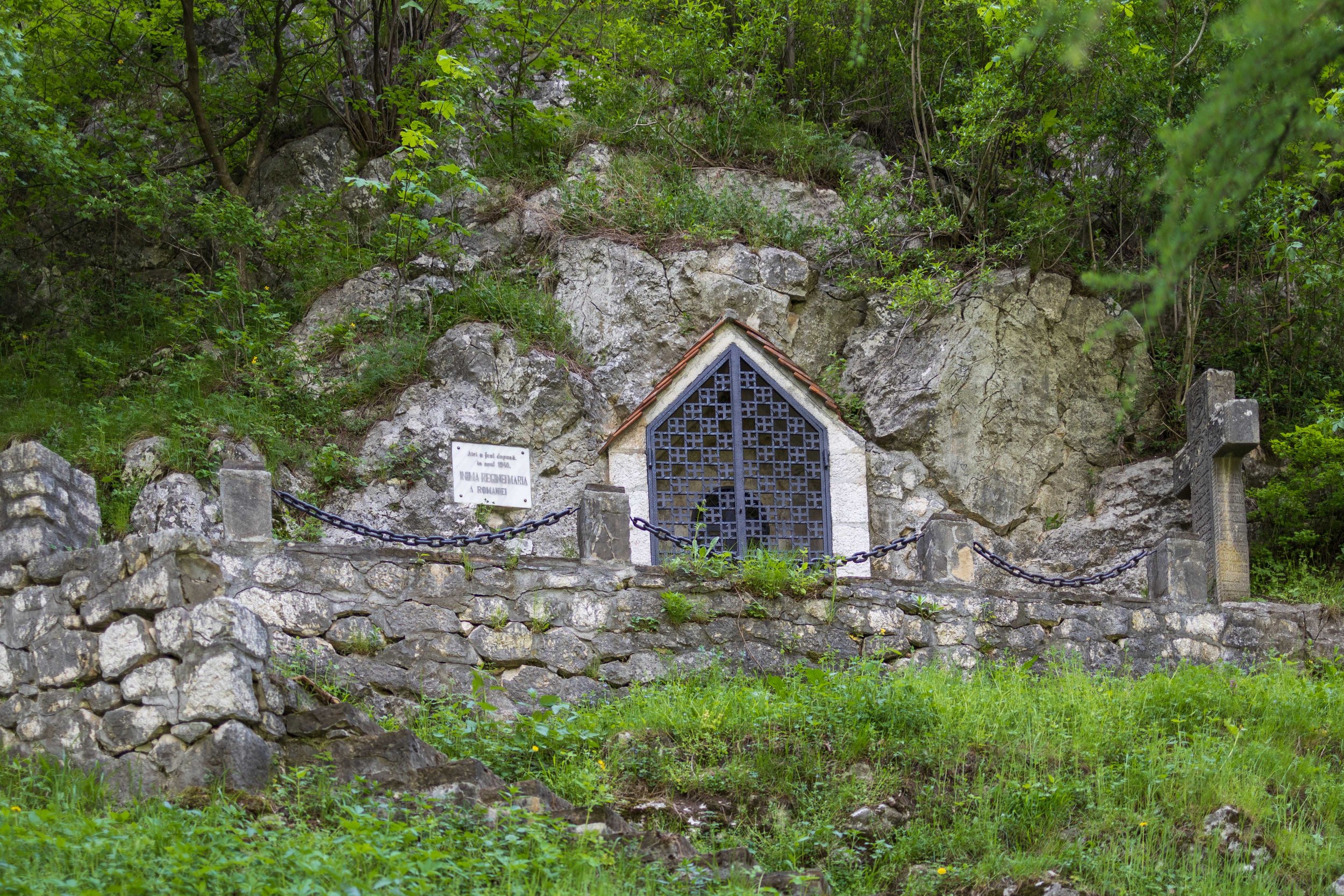
Our last stop before returning to Bucharest was Sinaia, another former Royal residence but also a popular short break destination in all seasons for Bucharest residents looking to escape the hustle and bustle. It is most famous for its impressive Peles Castle, commissioned by the first King of Romania completed in 1883, a true masterpiece of neo-Renaissance architecture. It hosts an overwhelming number of architectural and design styles and solutions, from its intricately carved central wooden staircase to its very modern glass roof that slides opened, the first European castle to have electricity.
Sinaia monastery also featured on our visit, in stark contrast to the opulence of the castle especially the old church and its painted roof, as well as the simple white cloisters adorned by red flowers. Founded in 1695 and named after Sinai Monastery on Mount Sinai, it is now home to a monastic establishment.
A special treat for our last night before heading back to Bucharest was our accommodation right next to Peles and Pelisor Castles, which besides its tranquil and traditional environment rewarded us with an exquisite dinner, surely fit for kings and queens (the way we always like to treat our participants!). The maitre d’ who was too rushed off his feet to be photographed on this occasion recommended one of the best wines I’ve ever had (it comes at a price) and it went perfectly well with all the melt-in-your-mouth Romanian dishes. This trip was clearly a culinary feast as much as it was a photography holiday!



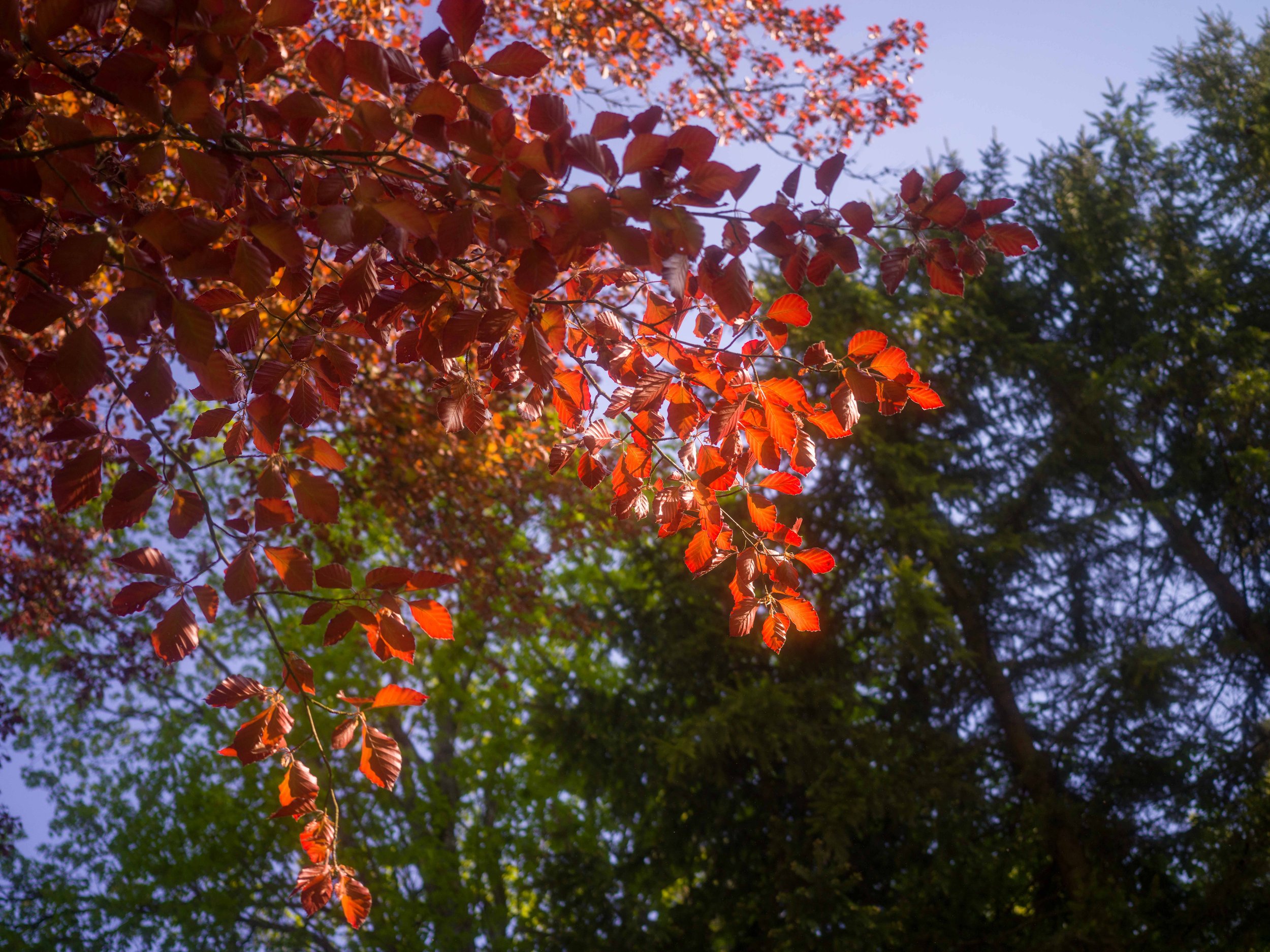
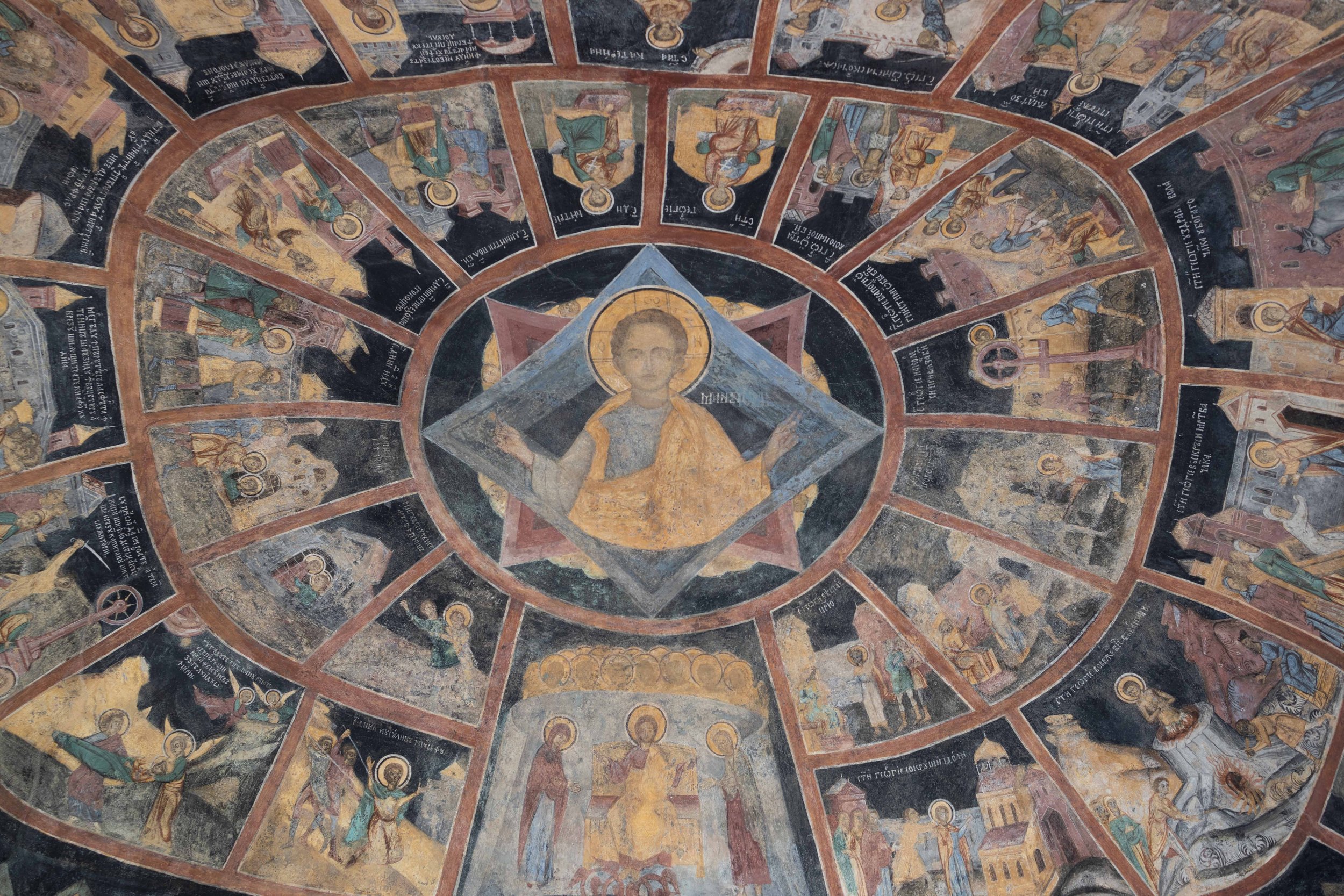
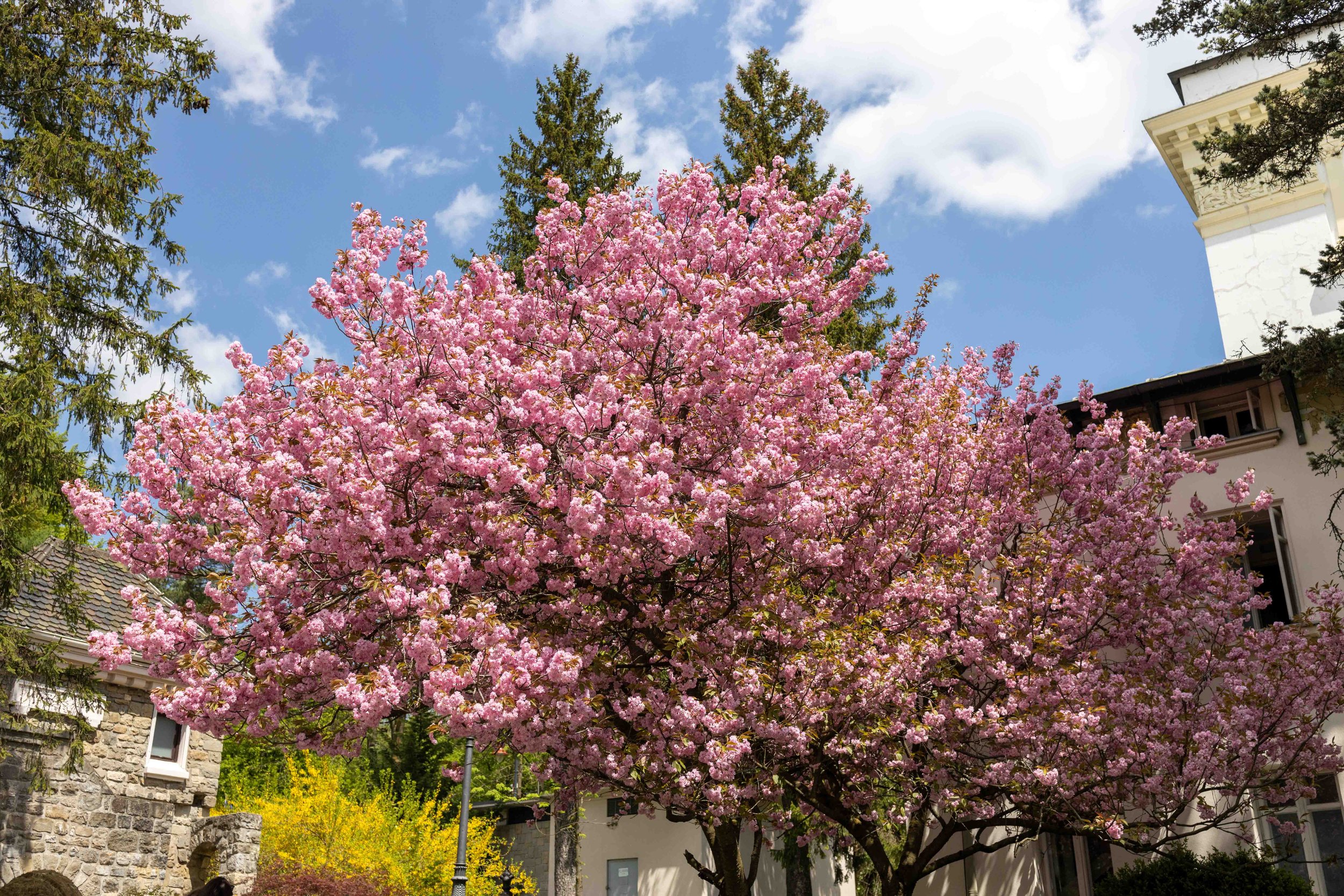


We are going back to Romania in May 2023, following a similar itinerary, if you are considering joining us and would like some more information check out this page and get in touch!
